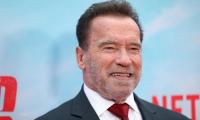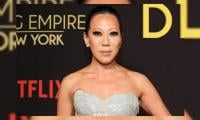After sponsoring juntas until well into the 1990s, the US went after Central and South America with “free trade” deals before once again working with extremists. The recent elections of Argentina’s Mauricio Macri and Brazil’s Jair Bolsonaro are major blows to socioeconomic and cultural progress. The recent decision of Ecuador’s President Lenín Moreno to allow British police to arrest Julian Assange by dragging him from the Ecuadorian Embassy in London, where Assange was granted asylum, is a further indication of that country’s alignment to US elite interests.
In the recent past, the US attempted to hook Latin America into the “free trade” paradigm. From the viewpoint of the US neoliberal project, a devastating turn of invents took place in the late-1990s to early-2010s. A number of left(ish) governments came to power in Central and South America, a region traditionally thought of by US elites as their “backyard.” The governments included: Hugo Chávez of Venezuela, Álvaro Colom of Guatemala, Leonel Fernández of the Dominican Republic, Mauricio Funes of El Salvador, Evo Morales of Bolivia, Daniel Ortega of Nicaragua, Lula da Silva of Brazil, Luis Guillermo Solís of Costa Rica, and Manuel Zelaya of Honduras.
Together, these representatives pushed backed against decades of US corporate and military domination.
US analysts did not consider these governments to be as radical as “communists” (red), hence they described them as “pink.” The drift towards progressive leftish-centrism was nicknamed the “pink tide.” Like European governments after the signing of the Maastricht Treaty 1992, “most members of the [pink] tide … worked to address social welfare concerns within the general confines of market mechanisms,” says Latin America specialist, Craig Arceneaux. He also writes that “although exasperation over neoliberalism spurred the political change, free markets are hardly endangered in Latin America.” Interestingly, the pro-“free market” Frazer Institute gave Latin America 5.3 out of 10 for neoliberalism in 1990, with much of US-sponsored violence still raging; 6.5 in 2000, during recovery; and 6.6 in 2008. Latin America specialist, Katherine Isbester, says that “most Pink Tide countries have compromised the neoliberal structuring of their political economy and the insertion of their nations into globalization.” Isbester also writes that NAFTA, CAFTA and the World Trade Organization have the effect of “locking in neoliberalism, [so] the room for deep reform to the organization of the economy is limited.”
But this should be understood within the context of where we are today, politically speaking. The fact that the US and its allies have moved so far to the right, economically, means that they perceived their “backyard” to be drifting too far to the left. US efforts to impose a “free trade” bloc came in the form of the US-led Dominican Republic-Central America Free Trade Agreement (CAFTA). But CAFTA did not prevent widespread social investments, such as Lula’s Bolsa Família, which lifted tens of millions out of poverty for the first time in the region’s tortured history.
Honduras: The events in Honduras presaged a return to the not-so-distant past. President Zelaya undermined CAFTA by guaranteeing a minimum wage, working more closely with the Bolivarian Alternative for the Americas (ALBA) bloc, and calling for a national Constituent Assembly. Zelaya was overthrown in a US-backed military coup in 2009. Regional specialists José Briceño-Ruiz and Isidro Morales write that the coup “did away with the relationship between Honduras and the Bolivarian axis.” The new leader, Porfirio Lobo, “intensified and accelerated efforts to conclude the negotiations of a free trade agreement with Canada,” America’s neoliberal neighbor which has also signed a multilateral “free trade” agreement with the European Union, namely the Comprehensive Economic and Trade Agreement (EU-CETA).
In her book, Hard Choices (2014), US Secretary of State, Hillary Clinton, expressed her fear of democracy by belittling Honduras, “home to about 8 million of the poorest people in Latin America. Its history has been marked by a seemingly endless parade of discord and disasters.” Clinton omits the US role. She describes Zelaya in racist terms, as “a throwback to the caricature of Central American strongman, with his white cowboy hat, dark black moustache, and fondness for Hugo Chavez and Fidel Castro.” Evoking the old colonial and disparaging language, Clinton feared that the US would look “isolated in our own backyard.” The wretched President Trump caused a corporate media storm with his “shithole countries” statement. The same media were silent over Clinton’s words.
Interestingly, the following passage, in which Clinton admits US involvement in the post-coup, was removed from the paperback edition of Hard Choices: “We strategized on a plan to restore order in Honduras and ensure that free and fair elections could be held quickly and legitimately, which would render the question of Zelaya moot and give the Honduran people a chance to choose their own future”. Clinton says she “began looking for a respected elder statesman who could act as a mediator.” She chose Óscar Arias of Costa Rica, who was “respected” because he followed US orders, unlike the allegedly pro-Chávez Zelaya. Unlike the rest of the region’s nations, Costa Rica “has one of the highest per capita incomes and greenest economies in Central America,” says Clinton. She neglects to mention that it’s also the regional country subject to fewest US invasions and proxy wars.
By the end of January 2017, at least 123 Honduran environmental and land activists had been murdered by gangs, police, and the military. The Civic Council of Popular and Indigenous Organizations of Honduras (COPINH) is an organization comprised of 200 ethnic Lenca communities. COPINH was led by Berta Cáceres, one of the country’s leading environmentalists. Cáceres organized against the Agua Zarca Dam. The Dam, funded by European companies (Voith Hydro and Siemens), risks desiccating the Gualcarque River and harming farming communities. In 2013, soldiers close to the Honduran company overseeing the Dam opened fire on peaceful demonstrators, killing indigenous leader, Tomás García. Cáceres was murdered in her home in 2016.
Refugees and the Colombia exception: Trump is brutal and inhuman towards refugees and immigrants, but Obama was not far behind. The New York Times ran the headline, “Obama’s Death Sentence for Young Refugees,” referring to the closed-border policy which most mainstream news ignored, until Trump cranked it up a notch. The paper reported that US President Obama and Mexican President Peña Nieto agreed to intercept Central American refugees trying to make it into the US via Mexico. Reporter, Nicholas Kristof, says: “In effect, we have pressured and bribed Mexico to do our dirty work, detaining and deporting people fleeing gangs in Honduras, El Salvador and Guatemala.” Kristof concludes: “The American-Mexican collusion began in 2014 after a surge of Central Americans crossed into the US, including 50,000 unaccompanied children.”
This coincided with the end of the Pink Tide and the rise of the old death-squad and drug-gang politics in many countries. When journalist Juan Gonzáles quizzed Clinton about her involvement in the coup and future plans for Honduras, Clinton replied:
“I think we need to do more of a Colombian plan for Central America, because remember what was going on in Colombia when first my husband and then followed by President Bush had Plan Colombia, which was to try to use our leverage to rein in the government in their actions against the [Revolutionary Armed Forces of Colombia (FARC)] and the guerrillas, but also to help the government stop the advance of the FARC and guerrillas, and now we’re in the middle of peace talks. It didn’t happen overnight; it took a number of years. But I want to see a much more comprehensive approach toward Central America, because it’s not just Honduras.”
This is an astonishing statement, given what Plan Colombia actually involved, namely stepping up US aid and training to the military, which in turn trains the murderous paramilitary forces. “Peace talks” came after years of intensified counterrevolutionary violence against civilians, three-quarters of which is the responsibility of state forces and their related gangs. For decades, Colombian elites used the military and paramilitaries to crush land reformers, student unions, environmentalists, and the leftist FARC.
This article is an excerpt from the book, ‘Privatized Planet: ‘Free Trade’ as a Weapon Against Democracy, Healthcare and the Environment’ (2019, New Internationalist). It first appeared as: ‘The Battle for Latin America: How the US Helped Destroy the ‘Pink Tide’. Courtesy: Counterpunch.org
Now, court can only act upon applications filed under its jurisdiction
Fact is that let alone Pakistan, Trump hasn’t really spoken much for any South Asian country, not even India
By embracing quantum mechanics, humanity has unlocked technologies once thought unimaginable
Regular reporting could ensure accountability and adaptive management
Report assesses readiness of over 190 countries to meet demands of the international job market
In Pakistan, prospect of introducing Starlink has been topic of discussion, particularly due to frequent internet...







